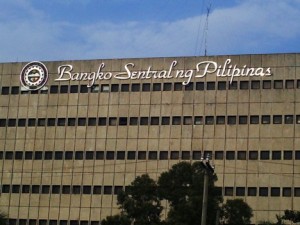
The lower-than-expected inflation rate in March has given the Bangko Sentral ng Pilipinas leeway to slash the rates on special deposit accounts by another 50 basis points during its monetary-setting meeting on April 25, economist at Bank of the Philippine Islands said.
The lower-than-expected inflation rate in March has given the Bangko Sentral ng Pilipinas leeway to slash the rates on special deposit accounts (SDAs) by another 50 basis points during its monetary-setting meeting on April 25, according to an economist at Bank of the Philippine Islands.
The National Statistics Office announced last week that inflation eased to 3.2 percent in March from 3.4 percent in February, lower than the market consensus of 3.4 percent and also settling at the lower end of the BSP’s target range of 3-5 percent.
“[The March] inflation print gives the BSP even more policy space to lower its SDA rates further. The added flexibility will allow monetary authorities to carry out their plan of setting up an interest-rate corridor mechanism within the context of their inflation-targeting policy framework,” BPI economist Emilio Neri Jr. said in a research note issued last Friday.
Neri said risks of an increase in the reserve requirement by the BSP remained low given the slowdown in domestic liquidity and bank lending growth.
The rate on SDAs, the facility through which the BSP borrows from a broader market, has been reduced by a total of 100 basis points so far this year to 2.5 percent. The SDAs, an indicator of excess liquidity that the BSP needed to lock up in a special facility, are still rising and nearing the P2-trillion mark despite the recent rate cuts.
Neri said the BSP would likely remain vigilant in carrying out its primary mandate to combat inflation. “However, with the announced pledges of monetary stimuli from major central banks, coupled with the recent Fitch upgrade, the BSP may look to focus its attention to fending off the influx of foreign capital into the local financial markets. The price mandate appears well-defended, the BSP must look to ensure its second pillar of central banking to ensure financial stability moving forward,” he said.
As Neri had predicted, Fitch Ratings became the first rating agency to give investment grade on the Philippines, a move that the BSP expected to attract more foreign portfolio inflows.
The BPI economist said the March inflation print was enough proof that the inflation regime in the country remained benign.
“Core inflation has been on the uptrend lately, showing slight signs of demand-pull inflation, although we continue to believe that episodes of high inflation in emerging markets have been driven primarily by cost-push factors, which will be absent in the medium term,” Neri said.
Combined with slowing domestic liquidity growth and bank lending expansion, Neri said savings on so-called sterilization costs (or the cost of mopping up excess liquidity) would be an added bonus as another 50-basis-point cut would halve the BSP’s interest payments this year compared to 2012.
On possible market implications, Neri said local currency government bonds should continue to derive support from the latest inflation picture.
“While there is risk that the (Bureau of the Treasury) could float bigger-than-planned local currency notes possibly emerging from bigger-than-expected deficit spending in an election year, the improving revenue picture and faster economic growth are likely to temper the rise in the deficit,” he said.
Meanwhile, Neri said the Philippine Stock Exchange index could continue to gain support from local investors as the potentially lower yields on SDAs after the BSP meeting on April 25 could “compel fund managers to take on more risks.”
On the foreign exchange, Neri said that while external factors were the more likely driver of the market, support at the P41-to-$1 level was likely to remain firmer after the inflation release as traders factored in the increasing probability of further SDA cuts. BPI reiterated its above-40:$1 forecast by end-2013.